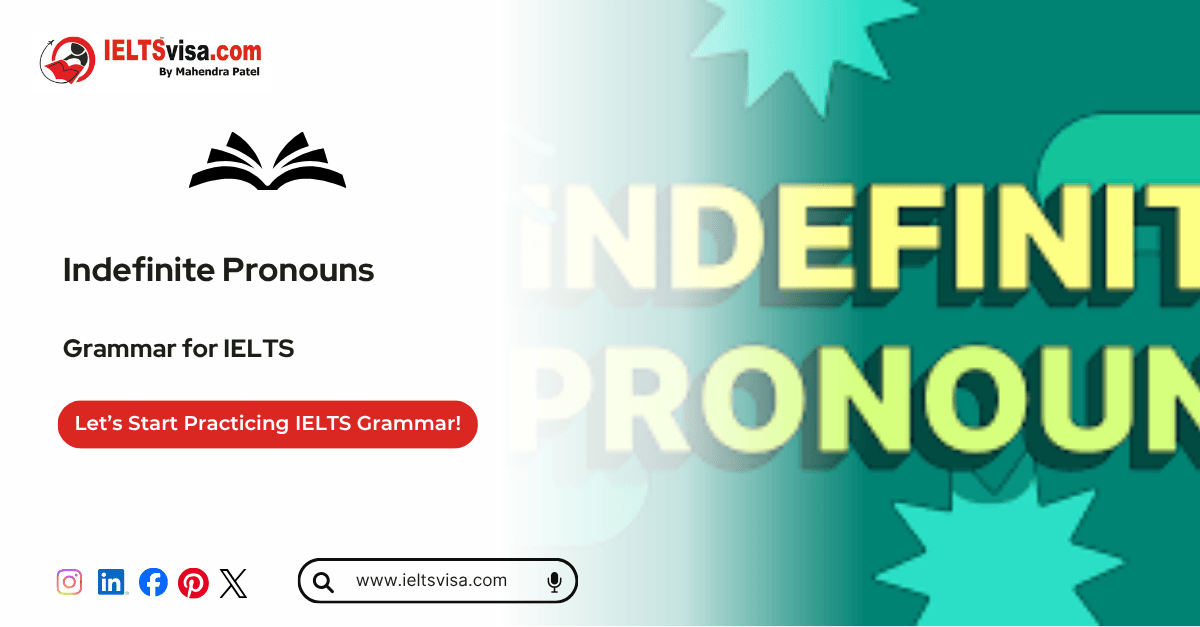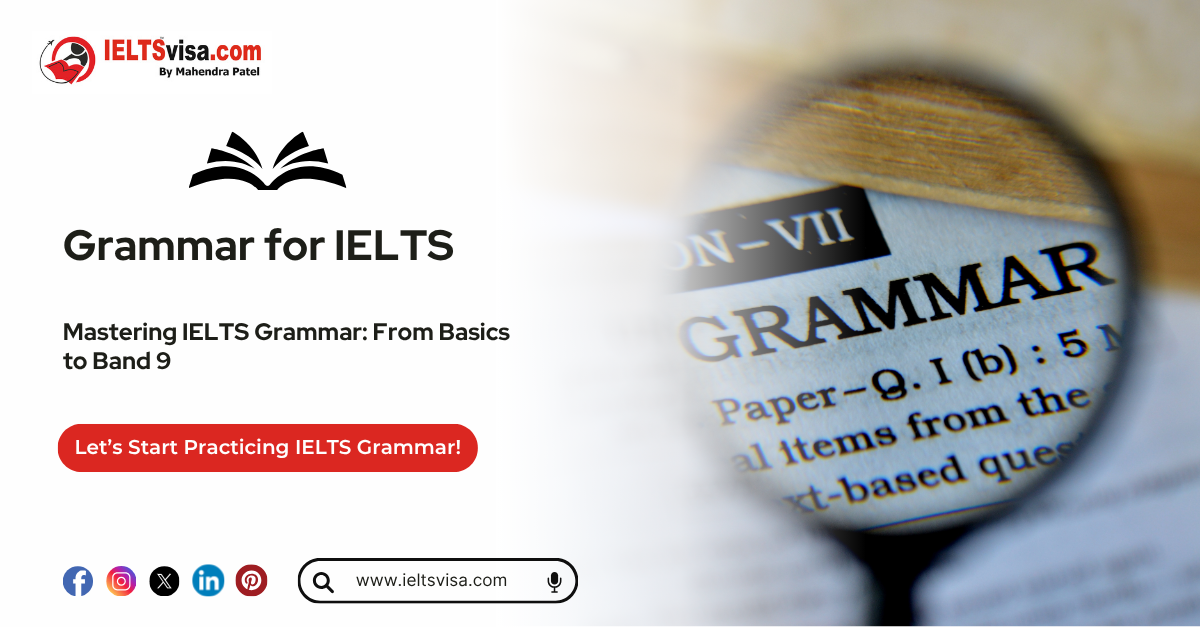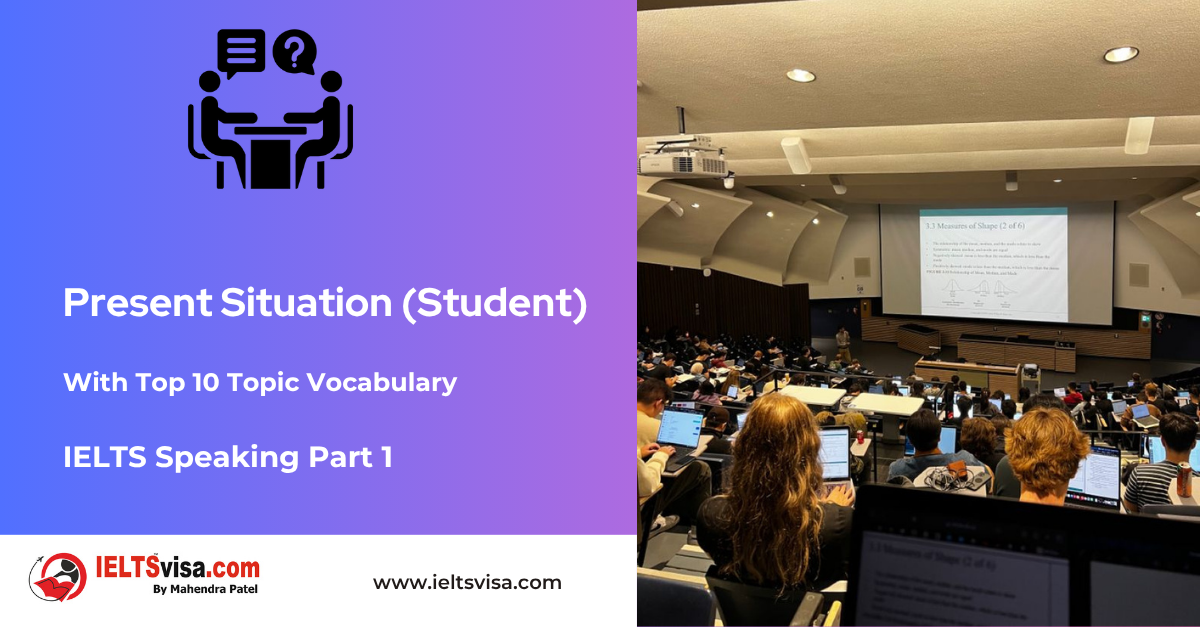Indefinite Pronouns
Grammar for IELTS

Indefinite Pronouns: Definition, Usage, and Examples
Indefinite pronouns are an essential part of the English language, allowing speakers and writers to refer to non-specific people, places, or things. They play a crucial role in creating sentences that are both flexible and clear. This article explores the meaning, definition, usage, and examples of indefinite pronouns, along with helpful practice exercises to test your understanding.
Table of Contents
1. What Are Indefinite Pronouns?
2. Definition of an Indefinite Pronoun
3. Rules for Using Indefinite Pronouns
4. List of Indefinite Pronouns with Examples
5. Common Errors with Indefinite Pronouns
6. Test Your Knowledge of Indefinite Pronouns
7. Frequently Asked Questions on Indefinite Pronouns
What Are Indefinite Pronouns?
Indefinite pronouns are used to refer to people, places, or things without specifying exactly who or what they are. They are incredibly useful when generalizing or when the specific noun is unknown.
Definition of an Indefinite Pronoun
-
- The Merriam-Webster Dictionary defines an indefinite pronoun as “a pronoun that does not refer to a specific person or thing.”
- The Oxford Learners’ Dictionary explains that an indefinite pronoun is “a pronoun that does not refer to any person or thing in particular, such as ‘anything’ and ‘everyone’.”
- According to the Collins Dictionary, it is “a pronoun that refers to an unspecified person or thing, for example, ‘someone,’ ‘nothing,’ or ‘all’.”
Rules for Using Indefinite Pronouns
When using indefinite pronouns, keep these points in mind:
1. Subject-Verb Agreement
-
-
- Singular indefinite pronouns require singular verbs. Example: Everyone is ready for the meeting.
- Plural indefinite pronouns require plural verbs. Example: Many are interested in the workshop.
-
2. Possessive Pronouns
-
-
- Use singular possessive pronouns with singular indefinite pronouns. Example: Each of the students brought their project.
-
3. Negative Indefinite Pronouns
-
-
- Avoid using double negatives with negative indefinite pronouns like nobody, nothing, or nowhere. Incorrect: I didn’t see nobody. Correct: I didn’t see anybody.
-
List of Indefinite Pronouns with Examples22
Here is a comprehensive list of indefinite pronouns with illustrative examples for better understanding:
|
Indefinite Pronoun |
Example Sentence |
|
Each |
Each of the books has a unique story. |
|
Another |
Could you show me another option? |
|
Anyone |
Is there anyone who can help with this task? |
|
Everyone |
Everyone enjoyed the party. |
|
Anything |
Anything is possible if you work hard. |
|
Everything |
Everything seems perfect today. |
|
Nobody |
Nobody knows the answer to this question. |
|
None |
None of the seats were taken. |
|
Nothing |
There is nothing left to do. |
|
Somebody |
Somebody left their umbrella in the hall. |
|
Someone |
Someone will pick you up from the airport. |
|
Few |
Few have understood the depth of his research. |
|
Many |
Many were invited to the event. |
|
Several |
Several participants submitted their forms late. |
|
Some |
Some of the apples are rotten. |
|
All |
All are welcome to attend the seminar. |
Common Errors with Indefinite Pronouns
1. Misusing Singular and Plural Verbs
-
-
- Incorrect: Everybody were present.
- Correct: Everybody was present.
-
2. Using Double Negatives
-
-
- Incorrect: Nobody didn’t come to the meeting.
- Correct: Nobody came to the meeting.
-
3. Confusion Between Singular and Plural Pronouns
-
-
- Incorrect: Each of the students brought their projects.
- Correct: Each of the students brought his or her project.
-
Test Your Knowledge of Indefinite Pronouns
Fill in the blanks with the appropriate indefinite pronouns:
1. Is there _________ who can explain this concept clearly?
2. _________ was prepared for the surprise announcement.
3. Could you bring me _________ to drink?
4._________ knew the answer to the riddle.
5. She searched everywhere, but there was _________ in the room.
6. The teacher asked _________ to stay quiet during the presentation.
7. _________ left the door open last night.
Answers
1. Someone
2. Everyone
3. Something
4. Nobody
5. Nothing
6. Everyone
7. Somebody
Frequently Asked Questions on Indefinite Pronouns
Q1: What is an indefinite pronoun?
An indefinite pronoun is a pronoun used to refer to non-specific people, places, or things.
Q2: What are some examples of indefinite pronouns?
Examples include anyone, everyone, someone, nobody, all, some, many, and few.
Q3: How are indefinite pronouns used in sentences?
Indefinite pronouns are used to generalize or refer to unknown nouns.
Example: Somebody left their jacket on the chair.
Q4: Can indefinite pronouns be singular or plural?
Yes, some indefinite pronouns are singular (e.g., everyone), while others are plural (e.g., many).
Q5: What is the difference between indefinite pronouns and other pronouns?
Indefinite pronouns do not refer to a specific noun, unlike personal or demonstrative pronouns.

Our Books
Master IELTS Speaking Part 1
IELTS Writing Task 1 Book
IELTS Writing Task 2 Book
Practice IELTS Other Modules
IELTS Listening
The IELTS Listening test assesses how well you can understand spoken English in various contexts. It lasts about 30 minutes and is divided into four sections with a total of 40 questions. The listening tasks become increasingly difficult as the test progresses.
IELTS Academic Reading
The IELTS Academic Reading section assesses your ability to understand and interpret a variety of texts in academic settings. It is designed to evaluate a range of reading skills, including skimming for gist, reading for main ideas, reading for detail, understanding inferences, and recognizing a writer's opinions and arguments.
IELTS Speaking
The IELTS Speaking test assesses your ability to communicate in English on everyday topics. It lasts 11-14 minutes and consists of three parts: introduction, cue card, and a discussion based on the cue card topic.
IELTS General Reading
IELTS General Reading tests your ability to understand and interpret various types of texts. Here are some key areas and types of content you can expect to encounter in the reading section, along with tips for effective preparation.
IELTS Academic Writing Task 1
In IELTS Academic Writing Task 1, you are presented with a visual representation of information, such as graphs, charts, tables, or diagrams, and you are required to summarize, compare, or explain the data in your own words.
IELTS General Writing Task 1
In IELTS General Writing Task 1, you are required to write a letter based on a given situation. The letter can be formal, semi-formal, or informal, depending on the prompt. Here’s a breakdown of the key components to include in your letter
IELTS Academic Writing Task 2
In IELTS Academic Writing Task 2, you are required to write an essay in response to a question or topic. Here’s a guide to help you understand the essential elements of this task
IELTS Exam Tips
To succeed in the IELTS exam, practice regularly, familiarize yourself with the test format, improve your vocabulary, develop time management skills, and take mock tests to build confidence.
Grammer for IELTS
Grammar is the foundation of effective communication in English. Understanding tense usage, subject-verb agreement, and sentence structure enhances clarity and coherence in writing and speaking.
Vocabulary for IELTS
Vocabulary plays a crucial role in the IELTS (International English Language Testing System) exam, especially in the Speaking and Writing sections. Here’s an overview of why vocabulary is important and how it impacts your performance
RECENT IELTS SAMPLES QUESTIONS AND ANSWERS
IELTS Speaking Part 1 – Favourite Sujbect – Physics
IELTS Speaking Part 1 - Favourite Sujbect - Physics Q: What is your favourite subject? A: My favourite subject...
IELTS Speaking Part 1 – Present Situation (Student)
IELTS Speaking Part 1 - Present Situation (Student) Q1: Are you a student or do you work?A: I’m a full-time...
IELTS Speaking Part 1 – Present Situation – Employee – as an International Student and Social Worker
IELTS Speaking Part 1 - Present Situation - Employee - as an International Student and Social Worker Q1: Are...
IELTS Speaking Part 1 – Persent Situation – Employee- as an Electric Engineer
IELTS Speaking Part 1 - Persent Situation - Employee- as an Electric Engineer Q1: What do you do for a...
IELTS Speaking Part 1 – Persent Situation – Employee – as an Software Engineer
IELTS Speaking Part 1 - Persent Situation - Employee - as an Software Engineer Q1: What do you do for a...
IELTS Speaking Part 1 – Persent Situation – Married
IELTS Speaking Part 1 - Persent Situation - Married Q1: Are you married?A: Yes, I am married. My spouse and I...













